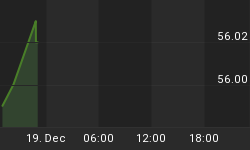As shown in the chart below, each of the past six recessions (shaded areas) was preceded by an inversion in the spread between the Treasury 10-year yield and the fed funds rate. But there were two other instances of inversion - 1966:Q2 through 1967:1 and 1998:Q3 through 1998:Q4 - immediately after which no recession occurred. It would appear, then, that an inverted yield curve is more of a necessary condition for a recession to occur, but not a sufficient condition. That is, if the spread goes from +25 basis points and to -25 basis points, a recession is not automatically triggered. Rather, whether an inversion results in a recession would seem to depend on the magnitude of the inversion and, to a lesser extent, the duration of it. Recession-signaling aside, the yield curve remains a reliable leading indicator of economic activity. Although the spread going from +25 basis points to -25 basis points might not result in a recession, it does indicate that monetary policy has become more restrictive. For a description of the theoretical underpinnings of why the yield spread is a leading indicator, see http://www.northerntrust.com/library/econ_research/weekly/us/pc070805.pdf. For some descriptive data on the past eight spread inversions, see the table below.

| Period of Inversion* | Average Spread (b.p.) | Maximum Negative Spread (b.p.) | Minimum Negative Spread (b.p.) |
| 1966:Q2 - 1967:Q1 | -30 | 56 | 13 |
| 1968:Q3 - 1970:Q2 | -102 | 213 | 15 |
| 1973:Q2 - 1974:Q3 | -295 | 413 | 101 |
| 1978:Q4 - 1980:Q2 | -186 | 313 | 76 |
| 1980:Q4 - 1981:Q3 | -326 | 361 | 273 |
| 1989:Q1 - 1989:Q4 | -72 | 98 | 23 |
| 1998:Q3 - 1998:Q4 | -26 | 33 | 19 |
| 2000:Q2 - 2001:Q1 | -42 | 63 | 10 |















